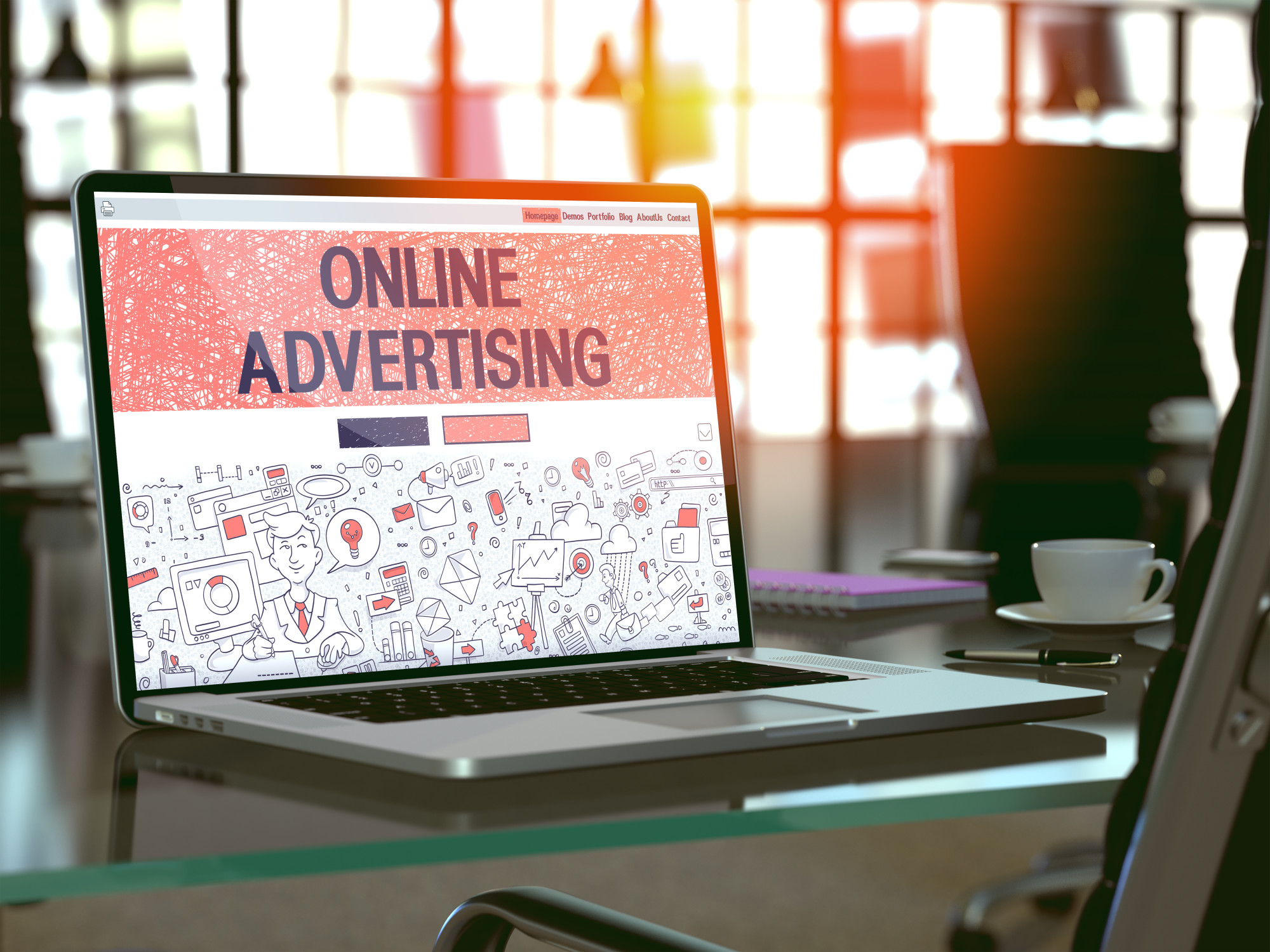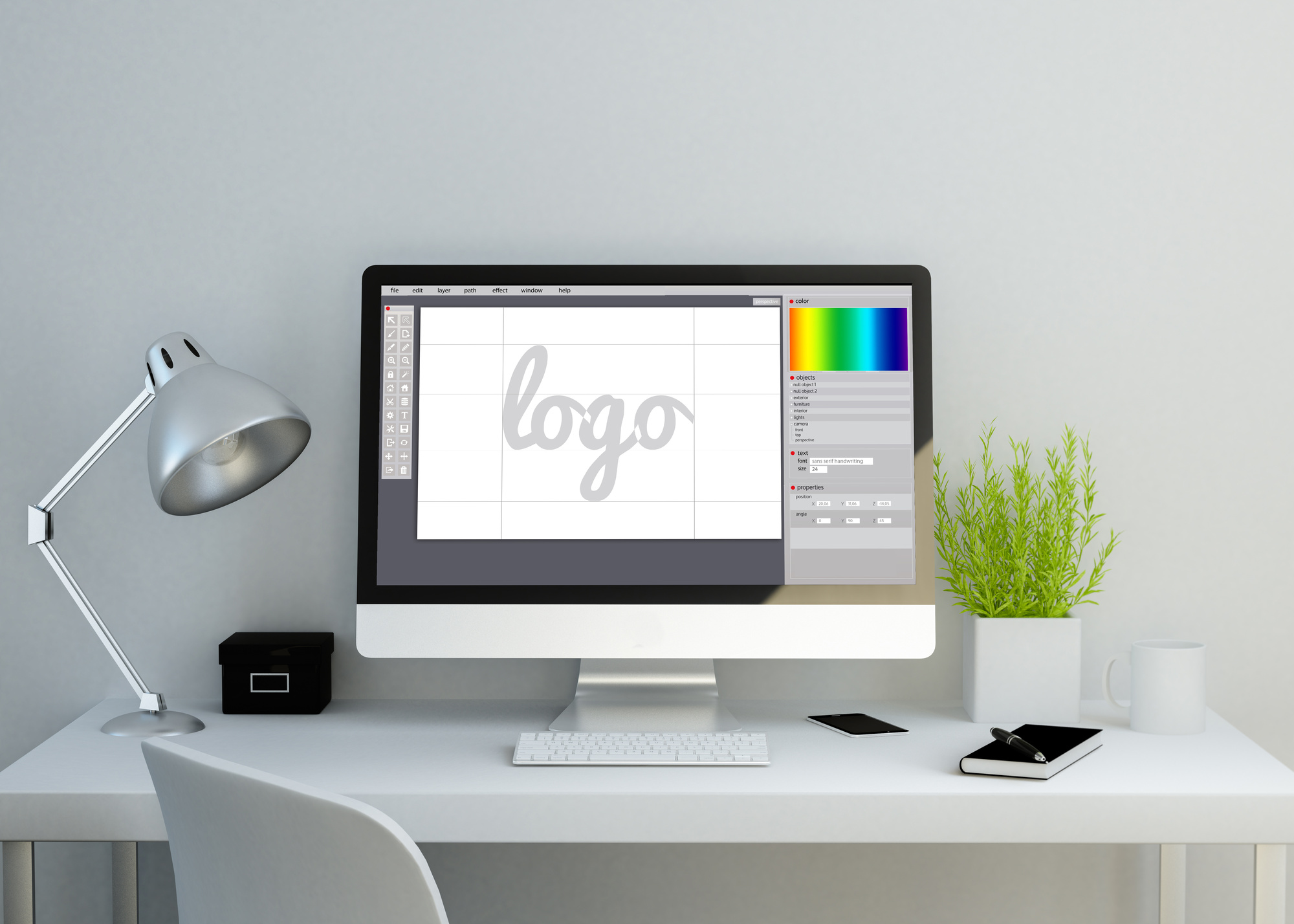8 Mistakes with Advertising to Avoid Online for Businesses
Posted on October 06, 2020 by Logo Design Tips and Tricks

Digital advertising is not easy, and the myriad of articles detailing what you should do can become overwhelming. Are you supposed to do it all at once, or pick out one or two strategies?
One way to start is to get an idea of what to avoid. This can help you select the best ways to move forward in your marketing plan. Below, we give our top 8 mistakes with advertising online.
1. Overlooking the Mobile Market
No matter how good your website is, it will be useless if you have not optimized it for mobile. With smartphones becoming the primary method of internet browsing, a company that does not optimize for mobile is losing sales and conversions. A staggering 82% of phone users turn to their phones when making a decision on purchases.
Being optimized does not mean you have to spend money building an app (though that would help a lot). You can have a mobile-friendly website by choosing mobile-friendly themes. Make sure the website loads quickly on mobile by hiring a developer to strip back unnecessary code and installing caching software.
2. Targeting the Wrong Demographic and Audience
To avoid wasting money on PPC advertising and marketing campaigns, you must make sure you have a defined audience to target. You must know who your customers are, and what their age, gender, income, and interests are. Take some time to research this, and ask your current customers for their information and details.
Do not make the mistake of targeting a broad audience. Your ads will be ignored by the majority of people and cost you money. Even if you have a wide spectrum of clients, create custom campaigns for each of your customer types.
3. Not Paying Attention to SEO
Search engine optimization (SEO) far surpasses any other form of internet marketing, because it is free. It is also common knowledge that anyone who searches online is more likely to click on organic links over paid ones. You can not afford to overlook the benefits of SEO.
SEO is not a short-term strategy. You must work at it over a period of time and incorporate it into the content of your website. To do this, you need to develop a full strategy implemented in everything you do.
4. Mistakes With Advertising on Social Media
Social media is another free tool that allows you to reach a customer who is at home or on the move. The real benefit lies in the fact that people choose to follow you, so they already have a degree of trust and engagement with your brand. This can be used to increase the customer experience and drive conversions and leads.
When starting on social media, make sure you spend time on the correct platforms. For example, if you are aiming your product at a business-orientated crowd, a platform like LinkedIn would provide more worth than a youth-focused platform like Tiktok.
5. Not Utilizing Promotions
Promotions, done badly, can make a brand look desperate. However, done correctly in campaigns that are planned well, they can catapult your traffic. Once you have the people on your site, it is likely you can dazzle them with more products and services, getting them to spend even more.
Coupons and discount codes are a great way to do this. You can also use competitions for free items to increase your social media following and brand awareness. Make sure you are offering something of value, and always ask customers to share so more people see the promotion.
6. Failing to Comment
Digital advertising is about building a relationship. Relationships do not work if only one person is responding. You need to spend time on answering questions and having conversations with customers and followers. This can be on social media or blogs.
This does not just mean commenting on your own media. Having conversations online with people in your field or answering questions on sites like Quora can help make you look like an expert in your field. They can increase brand awareness and build trust with potential customers.
7. Failing to Remarket
Acquiring new leads for your business is important, but remarketing to old customers or those who have shown an interest in your website is just as important. These people are the most involved with your brand, as they have either already bought something or are at the final step and just need a nudge.
An easy way to do this is to collect emails from potential leads and send them a reminder, especially if something is left in a shopping cart. You can find out more about marketplace remarketing.
8. Producing Content That Lacks Value
All content that you put out or advertise digitally must have value. It must provide something or be of worth to the customer. One of the worst mistakes someone can make when advertising brands online is putting out content that does not really advertise anything at all.
Go back to your data and see what your audience wants. Have a look at what they are visiting on your site, what is being shared, and what they are downloading. Then brainstorm more content in this vein and use that as part of your digital advertising strategy.
Starting With Online Advertising
Now that you know the mistakes with advertising online, you can begin to work out a sound strategy.
If you need more help and assistance with online marketing and any digital business growth advice, visit our blog. We update daily, and you can keep up to date by bookmarking our website right now!
Not a Mistake: What is Planned Obsolescence?
Posted on September 30, 2020 by Logo Design Tips and Tricks

Consumers scour the internet in hopes of finding the perfect product to meet all their needs. This attempt to be good financial stewards of their money gets undermined at every turn by major brands.
Corporate giants use planned obsolescence to make sure your dreams of product longevity are shortened to null. Check out this guide to understanding planned obsolescence and what it means for our environment.
The Forced Upgrade
When your appliances break, all you can think is how you’re going to make sure you buy the right version next time so it lasts longer. You consider the number of years it’ll likely last and divide that by the total cost hoping for some consolation that it’s only ‘X’ amount per year.
But this logic implies that you actually know how long your product or service will last. Planned obsolescence says that your product will last only as long as the brand is ready to release a new model.
An average from 1970 or how long refrigerators last have nothing to do with today’s consumer market. Average product lifespans no longer matter and brands feel no shame about it.
There are some exceptions to this rule based on the type of product it is and it’s pricepoint, but things like cell phones can have new releases throughout the year.
Apple never apologizes for it’s latest and greatest devices. It’s a forced upgrade people enjoy being a part of.
Less sexy forced upgrades usually include things you can barely afford or barely use. No one wants to spend more than a few minutes looking at a new printer when the old one no longer works.
You just want an occasional document printed at home for that rare occasion email isn’t possible. This forced upgrade you hate because knowing that it’s a printer feels like the right amount of information you should need before making a purchase.
Planned obsolensce isn’t just bad when it’s annoying though. It’s bad year round when you consider the impact to both your personal finances and the environment.
No Take Backs
The biggest problem with planned obsolescence is that companies won’t take the item back. Apple’s attempt at a recycling program for old phones is at least a start towards realizing people have no idea how to upcycle and old iPhone.
But most companies won’t even acknowledge the waste. This is a major problem because it puts the ownice on the consumer to figure out whether it’s a good item for a landfill.
Without really understanding its components, you can’t really make a decision about recycling or trashing an item. There’s no chance that you’d have an alternative to say, reuse or upcycle an old fridge once it broke down.
At some point, you’d give up trying and resort adding more E-waste on environment. Companies can play a much bigger role in cleaning up their product waste.
They’re best equipped to understand how products can be reused and the safest method of trashing the item. Yes, consumers technically own the item once they bring it home, but once they’re sold something new (that they don’t need) the company needs to take responsibility.
That’s the cost of turning a profit. Creating perceived and planning obsolescence fills up landfills while companies are rewarded for creating waste.
Before you believe that people can simply refuse to buy anything new, here are a few ways planned obsolescence is forced on consumers.
No Customer Support
You may have noticed that you can no longer can a company with questions about your older model electronics. You’ll get basic common sense support but not much more.
Big electronic manufacturers realized that helping customers fix old products is just bad business. After all, the best way to fix a broken washing machine is to buy another one, right?
Sales departments are available by phone, chat or email 24/7. But the service department has very limited contact information and even shorter hours.
Some brands have even started charging customers for technical help with their products.
Customer frustration leads to new purchases every time. It’s much easier to rid yourself of the long hold times and failed troubleshoots than to just buy a new product.
Apple faced lawsuits for recent claims that it not only released new models every year, but made sure the software on older model phones sabotaged their performance. This means consumers had no choice after their internet or email slowed to a crawl to upgrade to a new phone.
There’s nothing wrong with consumers wanting the latest and greatest models. But if a company is forcing you to spend, you’re trashing landfills with toxic waste at no fault of your own.
Patented Parts
If you’re a Tesla owner, you know that service for your car is an exclusive activity. Or at least the company thinks so by not letting you use third party mechanics claiming patent protection.
It’s fair for the company to protect it’s intellectual property, but what does this mean for cars that are too expensive for Tesla to repair. The patented parts move means the company can declare vehicles total losses if they don’t want to foot the bill.
They can also pass on their overhead to customers so they’re more likely to see the value in simply replacing the car. This is forced obsolesce that leaves Tesla drivers with a hefty bill at the end.
Planning for Planned Obsolescence
Believe it or not, there are ways planned obsolescence makes everyone use. Manufacturers waste natural resources when precious materials are added to landfills.
Consumers overspend leaving them with little disposable income to stimulate the economy. The cycle goes on and on.
The best thing for anyone to do is move back to simple machines that we can service on our own without fail. For more information and tips, visit our blog for updates.
5 Business Logo Design Mistakes and How to Avoid Them
Posted on August 26, 2020 by Logo Design Tips and Tricks

Creating your business logo is an important step in becoming a legitimate business.
If you’ve never designed a logo before, it can seem a bit daunting. How do you make one that expresses your business and builds brand loyalty?
Excellent business logo design is effective in representing you and your business. Fortunately, if you avoid certain pitfalls, it can be simple to create an effective logo.
How to Avoid Business Logo Design Mistakes
Your logo is going to show up on your website, letterhead, and paystubs. Look for a hassle-free pay stub generator to make life easier.
Here are 5 things to avoid.
Mistake 1: Choosing the Wrong Color
Colors for logos help show personality. You’ll want to choose ones that help create an emotional connection between the viewer and your company. Color creates meaning for logos.
Avoid using too many different colors, conflicting shades, and placing colors over backgrounds that make it hard to see. Stick to warm or cool tones. Don’t put them together.
Mistake 2: Picking an Inappropriate Font
Some try too hard to stand out from the pack when thinking about ideas for designs, but this can backfire.
You want to be unique, but you don’t want to be off-putting. Avoid putting two business logo fonts that don’t go together in your design.
Don’t use all capital letters with calligraphy. Keep it simple and pick a font that matches the tone of your business.
Mistake 3: Making it Similar to Others
It is important not to go so far from the norm that you leave people scratching their heads, but you’ve also got to ensure your logo doesn’t look like a rip off of another business.
Budget in the time to research other logos in your field to make sure what you’re thinking of hasn’t already been used before. It could be an innocent mistake, but it will hurt your credibility and possibly bring legal trouble if you copy another logo.
Mistake 4: Letters Overlapping
Something you should avoid is having the letters in your logo overlap or touch each other.
You might think that it looks cool, but unless you’re only using one or two letters, it can make it very hard to read.
Mistake 5: Making Your Logo Too Complicated
You don’t want your logo to be too busy. Sometimes people have a tendency to go all out in order to stand out. You don’t have to go crazy to make an impression.
Avoid overly loud colors and hard to read fonts. Don’t try and jam in more information than people can easily absorb. A little goes a long way here. Keep it simple and easy to read.
Get Started
Keep these 5 mistakes in mind and avoid them as you’re creating a logo for your business. If you keep it simple while communicating your uniqueness, you should be in great shape to make an effective design.
Effective business logo design makes a huge difference. Get going today on making a logo that represents what makes your company stand out from the rest.
Avoid the Bandwagon: 4 Costly Logo Trends Redesign Mistakes to Avoid in 2020
Posted on May 07, 2020 by Logo Design Tips and Tricks

Did you know that almost 60% of top companies such as Nike and Ford use combination logos? These logos appeal to the general public and make a strong, long-lasting impression. Combination logos consist of a small piece of text and an image or symbol. Following certain logo trends are great if you want to redesign your logo, but you should also be mindful to avoid costly mistakes.
For example, various companies redesign their logos and make them too complicated. This can confuse fans and make them lose their appreciation for the company. Keep reading this article to learn what mistakes to avoid when it comes to redesigning brand logos.
Not Making It Suitable for Various Mediums
You probably already know that a logo should display well on different backgrounds such as white, black, or blue. When you redesign your logo, make sure that it’s consistent across all mediums. It would be a pity to design a really beautiful logo just to realize that it doesn’t display well when placed on a dark background.
Test your logo ideas on various mediums to see if its message remains consistent. For example, your logo might look well on colored backgrounds, but when converted to grayscale it might lose its meaning. Make sure that this doesn’t happen, otherwise, your clients might have an unpleasant surprise later on.
Not Keeping It Simple
There is a fine balance between a simple, powerful logo and a complex, confusing one. When redesigning a logo for a company, make sure that you don’t add too many elements. Your logo should only have 2-3 colors maximum and feature simple visual elements. It shouldn’t look like a Christmas tree because it will look bad on websites and not be easily remembered by customers. This rule is valid when you use an infographic maker to create stunning infographics for your clients too.
Copying Another Logo
Plagiarism leaves a bad impression regardless of how beautifully redesigned the logo is. There are a lot of companies out there with redesigned logos that look eerily similar to the logos of famous brands such as Google or FedEx. Make sure that your new logo is unique. Copying another logo makes people think your business is unprofessional and it can ruin the reputation of your company.
Blatantly Following Trends Without Thinking Ahead
There are marketing trends, fashion trends, logo trends, you name it. These are great inspiration sources, but sometimes they don’t work for everyone. For example, many logo trends emphasize simplicity nowadays.
This is great, but the logo of Mercedes Benz, for example, already looks simple enough. Redesigning this logo and giving it a minimalist feeling will only take away from its luxury appeal. Make sure that you get inspired by the newest logo trends, but don’t follow them no matter what.
Now You Know What Mistakes to Avoid When It Comes to the Newest Logo Trends
Some logo trends move you in the right direction, but you should always redesign your logos with the utmost attention to detail. Coming up with multiple logo variations and testing them on multiple mediums ensure that your final product looks stunning.
In the meantime, don’t hesitate to check out the other articles on our website. You’ll learn more about logo redesigning, how to create infographics, website buttons, and more.








